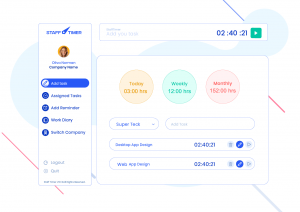10 Ways Managers Can Help Solve Employee Time Management Issues
Employee time management issues are so common that every member of the workforce suffers from them at least once in their work life.
One study found that employees can free up at least 20 percent of their week by applying more discipline to their time management. That isn’t very surprising because the average employee faces a lot of distractions every day. Corporate executives receive over 200 emails a day while meeting can easily take up 35 percent of the workweek.
In this article, we’re going to discuss ten ways managers can help solve employee time management issues. So without any further ado, let’s just jump into it.
Top Ways to Resolve Employee Time Management Issues
Evaluate Employee Performance
If you don’t even know about the problem then how will you be able to solve it? Use meaningful metrics to evaluate employee performance. You can start by observing if your employees are:
-
- Not completing their tasks on time
- Stressed, unmotivated or burnt out
- Frequently absent at the workplace
Once you get to the bottom of the problem, you’ll be able to come up with a good solution.
Highlight the Problem Areas
Once you’ve made sure that poor time management does exist in your workplace, the next step should be to find out the reason(s) behind it. Are your employees getting complacent? Or are they wasting their time visiting irrelevant websites in the workplace? However, don’t be quick to lay the blame on your employees. Sometimes, it just might be the fault of poor management.
Decrease Distractions
Distractions have become the bane of employee productivity. Open-plan offices are very popular these days but they have a major downside: little to no privacy. In this type of environment, even the most diligent employees can lose their focus. Plus, the internet and social media also take up a lot of our time every day. Taking all of this into account, is it any wonder that employees are facing time management issues?
You can’t do much about the layout of the building but you can ban irrelevant websites and restrict the use of mobile phones at your workplace.
Urge Employees to Set Goals
Reducing distractions will be of no use if your employees don’t have timely goals. But don’t be hasty here. Goal-setting is a characteristic that they should learn first before trying to apply it in the workplace.
Instruct your employees to set daily, weekly, and monthly goals based on a task or project’s duration.
Utilize Project Management Software
Setting goals and timelines may sound easy but in reality, it isn’t. Your employees will need all the help they can get. This is where project management apps come into play. Managers can use these apps to map out each team member’s workflow. Even reports and delivery times can be planned. And their biggest advantage is that they will let you make necessary adjustments along the way.
Train Employees on How to Prioritize
Project management software can only streamline your workflow. They can’t teach your employees the art of prioritizing. Only you can do that and even that to an extent. Employees need to learn how to prioritize urgent or important tasks in order to increase their productivity.
In the end, employees need to decide which tasks to complete first. You can only notify and help them with the more urgent tasks. Also, make sure your employees have the proper resources to finish these tasks.
Give Employees More Freedom
Every employee has their own way of doing work. Some tackle the hardest tasks first and then move on to the easier ones. Others operate in the opposite way. If they’re completing tasks on time then leave them to their preferred pattern. You’ll get good results as long as you give your employees the appropriate freedom.
Being too rigid won’t do you any good so try not to micromanage all the time as it will create a stifling workplace environment.
Allow Flexible Schedules
The current generation’s mindset is very different from the previous generation’s. Today’s workers value freedom above all else. They don’t like the rigid 9-5 system and consider it somewhat soul-crushing.
Some employees might be sharper and more organized in the early morning while others only get started around noon. This is why you should consider implementing flexible work schedules. Let your employees try different work schedules so that they decide which one works best for them.
Flexible schedules have the potential to:
- Increase efficiency
- Relieve stress
- Make performance better
Carefully Delegate Tasks and Duties
It’s possible for even employees with the right goals and priorities to lag behind in their tasks. A lot of the times they have too much on their plates and get overwhelmed by all the workload. In these cases, it’s better to delegate their tasks to their colleagues. But make sure that you assign these tasks to the people who know the employees previously working on the tasks.
Supervise Accordingly
Giving employees freedom doesn’t mean leaving them to their own devices. Some type of supervision is still necessary. For example, you can install an employee time tracking software, like Staff Timer, to track attendance, breaks, and work hours.






